When gardeners aren’t talking about the weather they are talking about bugs. This year in my garden there seems not to be so much damage from slugs and cutworms as there is from beetles.
This should not come as a surprise since beetles are the most common insect in my neck of the woods.
Most beetles are good bugs; they eat other insects and are an important link in the food chain for snakes, lizards, birds, and small mammals. Don’t kill every beetle! The average backyard is home to thousands of insects and only a fraction of them are destructive, most are either harmless or beneficial. Learn more about the many beneficial insects in the garden.
Keeping Beetles at Bay
The most common methods of bug control for organic gardeners are barriers, traps, repellents, and handpicking. Knocking the beetles into a pail of soapy water works well. A friend of mine devised a handy bug collector made from 2 plastic milk jugs. He taped the two together at the necks and cut the bottom out of one to make it into a giant funnel. Add a little soapy water in the bottom jug and head out to the garden.
Japanese Beetles
This milk jug method works especially well for Japanese beetles since they tend to fall straight down when disturbed. Go out in the morning when the bugs are still sleepy. Place the funnel underneath the clusters of beetles and brush them in. See more about Japanese Beetle control.
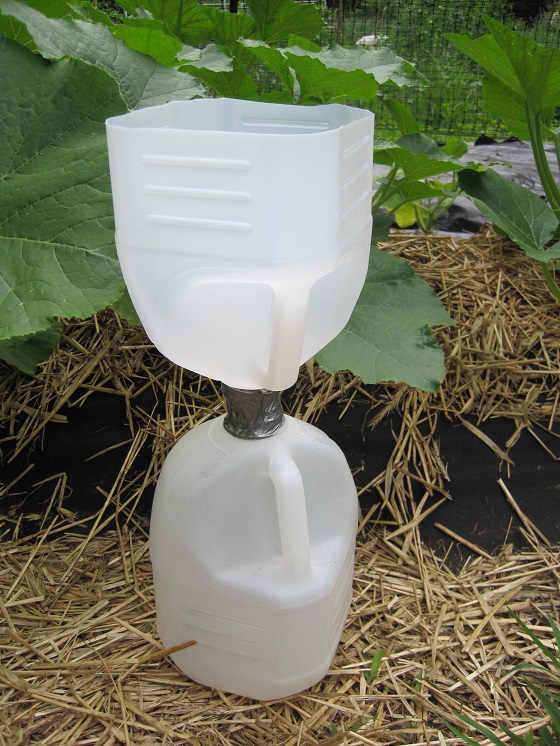
Lily-Leaf Beetles
Beetlemania started early this year with the lily-leaf beetles. We now know to look for them as soon as the Oriental and Asiatic lilies (thankfully they don’t bother daylilies) start to emerge. These bugs require constant vigilience on our part or they quickly get ahead of us and decimate the lilies. Bright red with black legs, at least they are easy to spot. They lay eggs on the undersides of the leaves and their larvae do as much damage as the adults, eating huge amounts of foliage each day. The larvae have the disgusting habit of covering themselves with their excrement to avoid detection so it is important to squish the poop piles as well as the beetles to stay ahead of future generations.
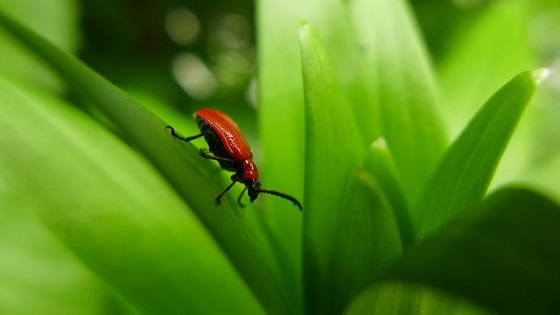
Striped Cucumber Beetle
The striped cucumber beetle attacked the squash plants first but soon found the cucumbers and established a colony there as well. They are pollen eaters so they are attracted to the bright yellow squash blossoms and cucumber flowers. I have used yellow sticky cards to trap them in the past but found that I was catching beneficial insects too, so I had to stop.
Young plants can be covered with well-anchored row covers in the spring which helps to thwart the beetles early on, but the covers need to be removed when the plants begin to blossom to allow other insects in to pollinate them. It is important to get rid of as many cucumber beetles as possible because they not only eat pollen, flowers, and leaves but also infect the plants with a bacterial wilt that can stunt or kill the whole plant. Their larvae feed below ground on the roots and underground stems and they can spread wilt also. Once a plant has wilt there is no cure. It is best to pull it out and remove it from your yard. Watermelons and some winter squashes such as acorn, blue hubbard, and butternut are resistant to this wilt.
See more about Cucumber Beetle control.
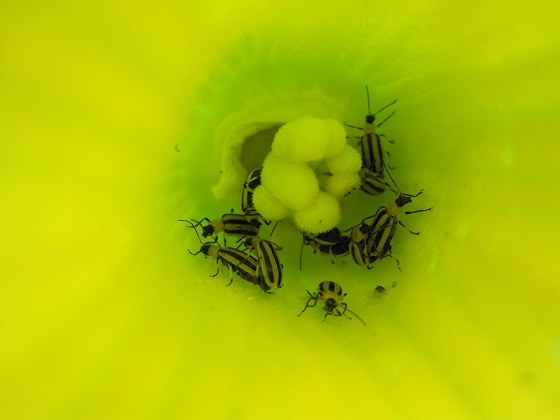
Squash Bugs Kill Plants
Squash bugs suck sap from the leaves and stems of squash and pumpkins and will damage the fruit if given the chance. They also transmit a toxin in their salvia that can kill young plants. Around the time the vines begin to lengthen, squash bugs start laying shiny, golden brown eggs on the undersides of the leaves.
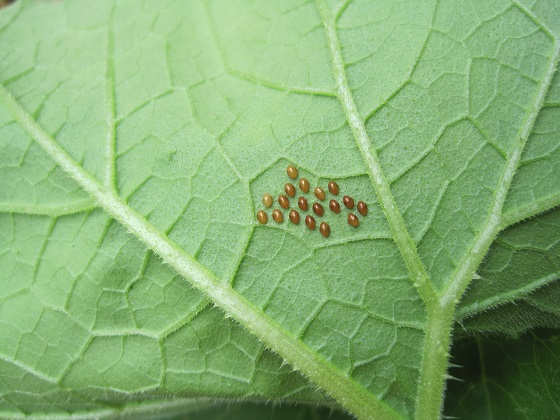
The adults and immature squash bugs (called nymphs) hide under mulch near the base of the plants. One way to trap them is to place boards near the squash plants. At night, many of the bugs will congregate underneath them and in the morning you can give the boards a good stomp to crush them. Another remedy I have not tried is to make a tea from cedar chips soaked in warm water. Spray it on the plants foliage and on any squash bugs you see. It is supposed to kill them.
See more about Squash Bug control.
What’s Bugging You?
The list of beetles goes on and on. Colorado potato beetles, Mexican bean beetles, Japanese beetles, rose chafers, etc. Let us know if you have any home remedies for keeping beetlemania at bay in your garden. See our full garden pest and disease library.
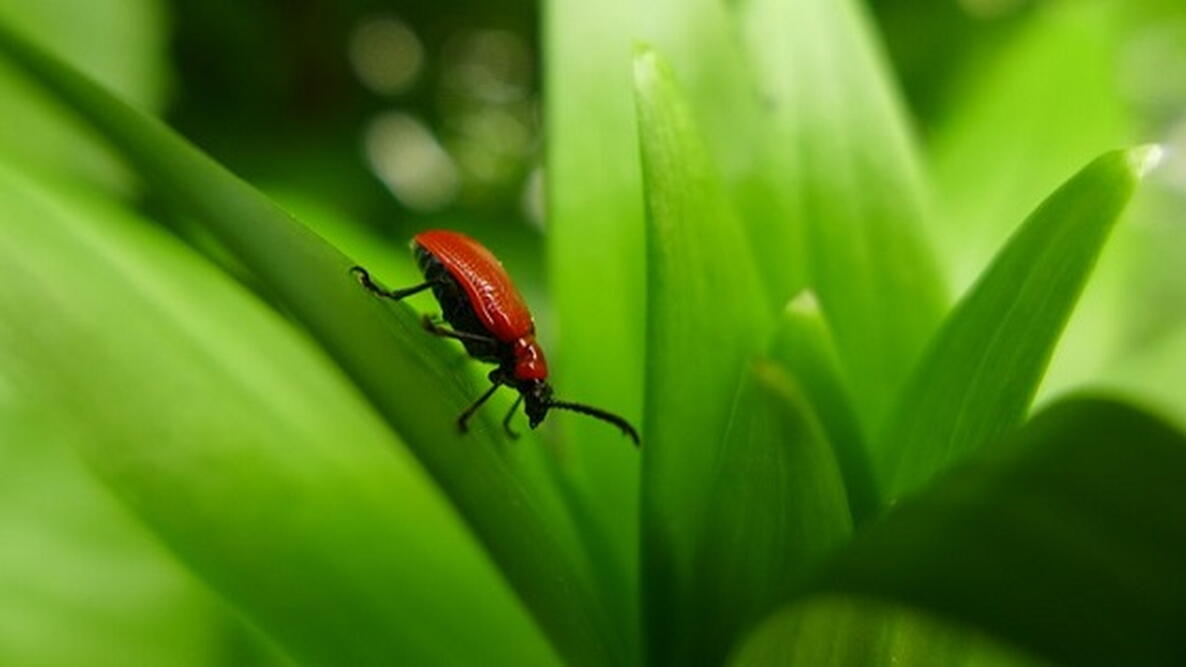






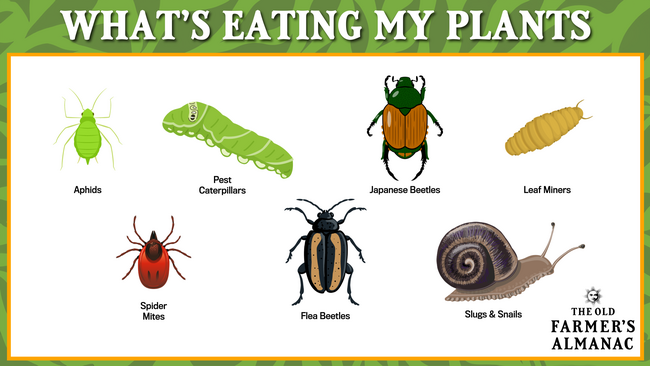

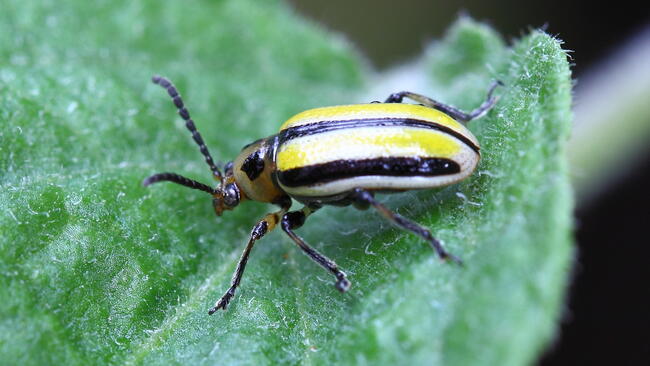






Comments